- Electron transport properties of novel organic crystals
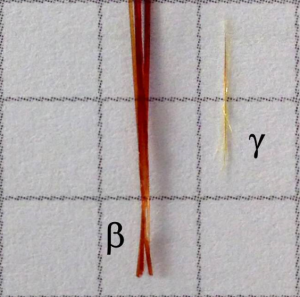 Single crystals are interesting for electronic applications because careful synthesis can ensure high purity and long-range order, but conductivities tend to be low. In order to improve carrier mobilities in organic crystals, the molecular configuration needs to be altered without the addition or subtraction of chemical substituents, which may adversely affect the conductive properties. We are achieving this by synthesising organic crystals previously unknown to science through the application of strong magnetic fields during their growth. In collaboration with the High Field Magnet Laboratory in Nijmegen, and the Laser Chemistry, Spectroscopy & Dynamics Group in Bristol, we create and test these crystals under applied fields of up to 37 T.
Single crystals are interesting for electronic applications because careful synthesis can ensure high purity and long-range order, but conductivities tend to be low. In order to improve carrier mobilities in organic crystals, the molecular configuration needs to be altered without the addition or subtraction of chemical substituents, which may adversely affect the conductive properties. We are achieving this by synthesising organic crystals previously unknown to science through the application of strong magnetic fields during their growth. In collaboration with the High Field Magnet Laboratory in Nijmegen, and the Laser Chemistry, Spectroscopy & Dynamics Group in Bristol, we create and test these crystals under applied fields of up to 37 T.- Supervisor(s)
- Dr. Simon Hall, University of Bristol
- Terahertz photonics
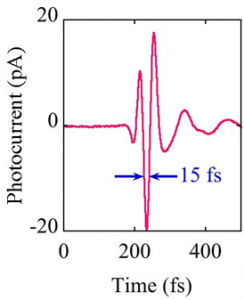 The terahertz (THz) part of the electromagnetic spectrum, which lies between microwaves and the infrared overlaps fundamental excitations in condensed matter. Studying the THz dynamics of materials yields unique information about the physics governing their macroscopic behaviour but optical devices at THz frequencies that can be used for spectroscopy are underdeveloped. We are using nano- and micro-structuring of semiconductors and glasses to create high performance components such as ultrafast and ultrabroadband sources, detectors, waveguides and polarisers.
The terahertz (THz) part of the electromagnetic spectrum, which lies between microwaves and the infrared overlaps fundamental excitations in condensed matter. Studying the THz dynamics of materials yields unique information about the physics governing their macroscopic behaviour but optical devices at THz frequencies that can be used for spectroscopy are underdeveloped. We are using nano- and micro-structuring of semiconductors and glasses to create high performance components such as ultrafast and ultrabroadband sources, detectors, waveguides and polarisers.- Supervisor(s)
- Dr. Steve Andrews, University of Bath
- Ultrafast spectroscopy of phase change materials
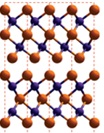 Femtosecond pulses of light can be used to excite and probe transient electronic and structural changes in materials that exhibit phase transitions (e.g. insulator to metal). Currently we are collaborating with the Singapore University of Technology and Design to use short and intense pulses of far-infrared radiation to drive and study phase transitions in GeTe/Sb2Te3 van der Waals superlattices that exhibit unusual properties such as giant magnetoresistance associated with topological insulator behaviour and applications to non-volatile memory and optical recording
Femtosecond pulses of light can be used to excite and probe transient electronic and structural changes in materials that exhibit phase transitions (e.g. insulator to metal). Currently we are collaborating with the Singapore University of Technology and Design to use short and intense pulses of far-infrared radiation to drive and study phase transitions in GeTe/Sb2Te3 van der Waals superlattices that exhibit unusual properties such as giant magnetoresistance associated with topological insulator behaviour and applications to non-volatile memory and optical recording- Supervisor(s)
- Dr. Steve Andrews, University of Bath
- Computational electronic structure
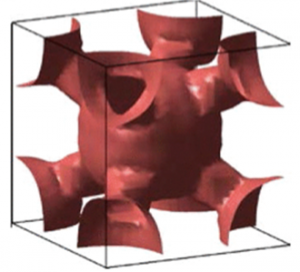 Density-functional theory has revolutionised the computation of the electronic structure of solids. Here in Bristol we use our high-performance computing facility, BlueCrystal, to calculate the electronic structure of electronically complex materials using a variety of state-of-the-art approaches (including FP-LAPW and KKR). Current themes include the study of the electronic structure of high-entropy alloys (a new alloy paradigm with typically 4 or 5 components in equiatomic concentrations), Heusler alloys (including half-metallic ferromagnets), and correlated oxides (such as manganites and ruthenates).
Density-functional theory has revolutionised the computation of the electronic structure of solids. Here in Bristol we use our high-performance computing facility, BlueCrystal, to calculate the electronic structure of electronically complex materials using a variety of state-of-the-art approaches (including FP-LAPW and KKR). Current themes include the study of the electronic structure of high-entropy alloys (a new alloy paradigm with typically 4 or 5 components in equiatomic concentrations), Heusler alloys (including half-metallic ferromagnets), and correlated oxides (such as manganites and ruthenates).- Supervisor(s)
- Professor Stephen Dugdale, University of Bristol
- Electronic structure through momentum distributions
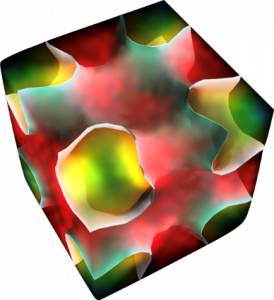 The electron momentum distribution contains a wealth of information about the ground state wave functions of electrons in solids. We can probe it through the Compton scattering of x-rays, and also by annihilating electrons with positrons. In particular, the momentum distribution holds valuable information about the Fermi surface, the shape of which is key to understanding many behaviours (e.g. magnetic ordering, density waves, electron-phonon coupling). We do positron annihilation in Bristol and with collaborators in Munich, and perform our Compton scattering experiments at the SPring-8 synchrotron in Japan.
The electron momentum distribution contains a wealth of information about the ground state wave functions of electrons in solids. We can probe it through the Compton scattering of x-rays, and also by annihilating electrons with positrons. In particular, the momentum distribution holds valuable information about the Fermi surface, the shape of which is key to understanding many behaviours (e.g. magnetic ordering, density waves, electron-phonon coupling). We do positron annihilation in Bristol and with collaborators in Munich, and perform our Compton scattering experiments at the SPring-8 synchrotron in Japan.- Supervisor(s)
- Professor Stephen Dugdale, University of Bristol
